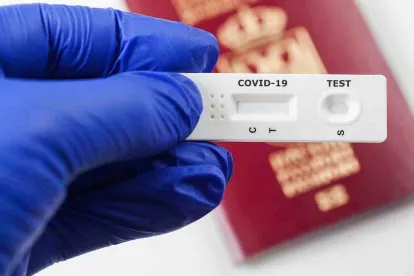On January 30, 2023, the Biden administration announced its intention to make final extensions of both the COVID-19 National Emergency (NE) and the COVID-19 Public Health Emergency (PHE) through May 11, 2023, at which point both will end. These emergency declarations have been in place for nearly three years and have enabled the government to modify certain coverage requirements by Medicare, Medicaid and private insurance plans, as well as benefits administration rules. The end of the PHE and NE may mean added costs for benefits plans and new questions regarding compliance.
The differences between and impact of the PHE and NE are commonly misunderstood. While both are declared by different individuals, both are ultimately controlled by the current administration. The PHE and NE have different impacts on plan administration and benefit plan requirements.
This series will explore the implications of the PHE and NE and what their impending end may mean for benefit plan sponsors. These articles will be released periodically before May 11.
IN DEPTH
PHE VERSUS NE
The Secretary of the US Department of Health and Human Services (HHS) first declared a public health emergency in January 2020 for the COVID-19 pandemic. This PHE has been routinely renewed in 90-day increments.
Former President Trump first issued a national emergency declaration in March 2020. A national emergency declaration is in effect until it is terminated by the president or through a joint resolution by Congress.
In response to these federal emergency declarations, the Internal Revenue Service (IRS) and other government agencies have issued various forms of regulatory and other relief. Further, Congress has enacted legislative relief, including certain provisions in the Coronavirus Aid, Relief, and Economic Security (CARES) Act and the Consolidated Appropriations Acts (CAA). Much of this relief is tied to the end of both the NE and the PHE.
EMPLOYEE BENEFITS IMPACTED BY THE PHE AND NE
There are several important benefit coverage and administration requirements connected to the PHE and/or NE that may remain the same, remain for a temporary period or may need to be discontinued upon the end of these federal emergencies. Over the course of the upcoming weeks, we will cover the key topics that may be triggered by the end of the PHE and/or NE, including:
-
COVID-19 Vaccines (Part 3 of 10)
-
Telehealth (Part 4 of 10)
-
Mental Health Parity (Part 5 of 10)
-
High Deductible Health Plans, Health Savings Accounts and Employee Assistance Plans (Part 6 of 10)
-
Deadline Tolling Applied to Each of:
-
COBRA (Part 7 of 10)
-
Claims and Appeals + External Review (Part 8 of 10)
-
HIPAA Special Enrollment (Part 9 of 10)
-
Other Plan-Related Notices (Part 10 of 10)
-
Note that the items covered above are not an exhaustive list of all legislative and regulatory changes that could affect employee benefit plans. This series is meant to keep employers informed about some of the most important upcoming changes and the impending decisions and disclosures that need to be made.






 />i
/>i
